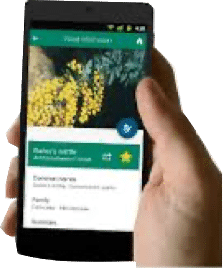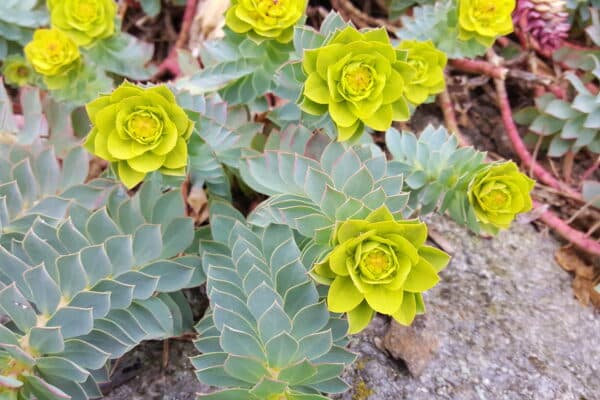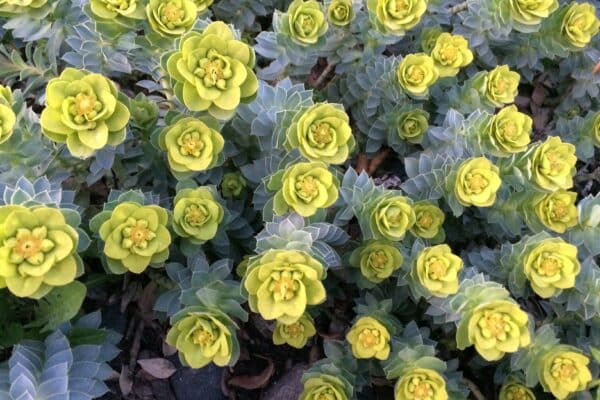Myrtle spurge
Warning
Myrtle spurge is toxic to humans, livestock and wildlife when consumed, or when its sap (latex) contacts skin. The sap causes nausea, vomiting and diarrhea when eaten. It can cause blindness if it gets in people’s eyes and skin contact causes redness, swelling and blisters. This plant is recognized as invasive and toxic in BC.
About This Species
Myrtle spurge (Donkey tail, Blue spurge) is a short, creeping escaped garden perennial introduced from Europe. It likes dry, disturbed soils where it grows quickly and aggressively, releasing chemicals from its roots which stop other plants from growing near it. This helps it crowd out native species. Myrtle spurge reproduces by seeds, but roots fragmented by cultivation can also produce new plants.
How to Identify
Myrtle spurge’s (Donkey tail, Blue spurge) is a short, creeping escaped garden perennial that can grow 10-15 cm tall and forms a low, spreading mound.
Myrtle spurge’s flowers are small and yellow surrounded be bract cups.
It’s leaves and stems are a light blue-green color. Its leaves are very sharp and spiral closely around the stem.
Take Action
Prevention is the best approach.
- Spurges Factsheet PDF
-
If you need advice about invasive species on your property or you are concerned about reported invasives in your local area, contact your local government or regional invasive species organization.

Plantwise
Learn about best practices
A few non-invasive alternatives to plant instead of Myrtle spurge include:
- Broadleaf stonecrop (Sedum spathulifolium)
- Cushion spurge (Euphorbia polychroma)
- Lance-leaved stonecrop (Sedum lanceolatum)
- Rock rose (Helianthemum nummularium)
- Yellow ice plant (Delosperma nubigenum)
REPORT TO PROTECT BC’S BIODIVERSITY

Use the app
Observe and report to protect BC’s biodiversity

Report through this website
Use our form to tell us what you’re seeing and where.

















